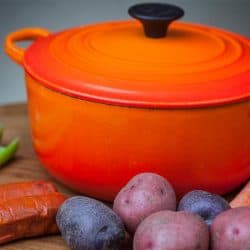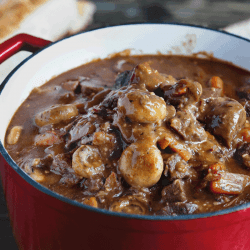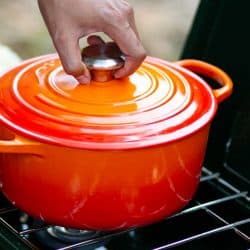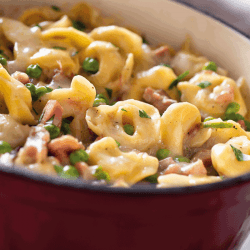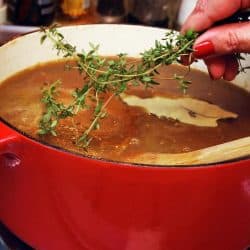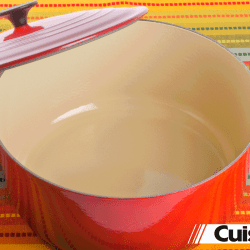Dutch ovens are a traditionally beautiful piece of cookware and a modern staple in home kitchens. These handy cookwares are great for preparing an array of foods in one conventional pot. Perhaps you are considering purchasing a Dutch oven, and you're wondering whether you could use it on your cooktop or in your microwave. We've researched these questions, and we have helpful answers to share with you!
No, Dutch ovens cannot be used inside of a microwave under any circumstance. Dutch ovens are not compatible with microwave cooking because the interior structure of the Dutch oven is cast iron, and metals of any sort are prohibited in microwaves. Metals will cause sparks and could cause an electrical fire inside your kitchen.
Are you interested in learning more about Dutch ovens? Wondering if you could use a Dutch oven on your stovetop? Are there safety protocols for this type of cookware? Please continue reading this article; we have informative materials to share with you!
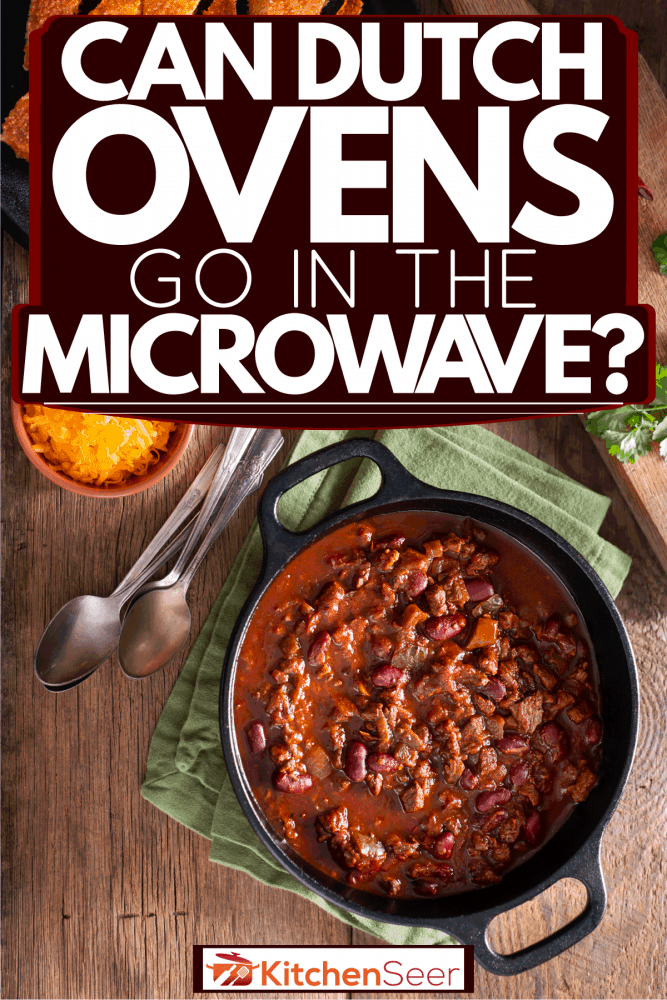
Can Dutch ovens go in the Microwave?
The primary material Dutch ovens are constructed from is cast iron, one of the strongest metals on the planet. Also, many models are coated with enamel that generally contains trace amounts of aluminum and other metals.
If these metals are placed in a microwave, the microwaves will be reflected from the metals back to the appliance's interior.

A microwave doesn't have ample materials or space to absorb the reflected microwaves that arch back and forth from the metals to the interior of the microwave. Once enough reflections between arching metals and the interior of the appliance have collided, this will generate a small lightning bolt.
The small bolt will ruin the cookware and start a small appliance fire or, worse, personal injury and property loss.
Click here to view the flame orange Le Creuset 5.5 qt. on Amazon.
What is a Dutch oven made of?
Dutch ovens are primarily manufactured from 100% cast iron, and the durability this metal provides has been the reason many Dutch ovens have been passed down for generations. Also, Le Cruset and other cookware manufacturers coat their Dutch ovens with enamel that adds a pop of color and non-stick properties.
The advantage of cooking with an enamel-coated Dutch oven is, foods do not stick to the bottoms or sides of the oven as easily. Cleaning the Dutch oven is much simpler. Remove excess bits of food with a spatula, rinse, and place it in the dishwasher or wash by hand—thoroughly dry before putting it back in the cabinet.
Click here to view these silicone rubber spatulas on Amazon.
What is the best material for a Dutch oven?
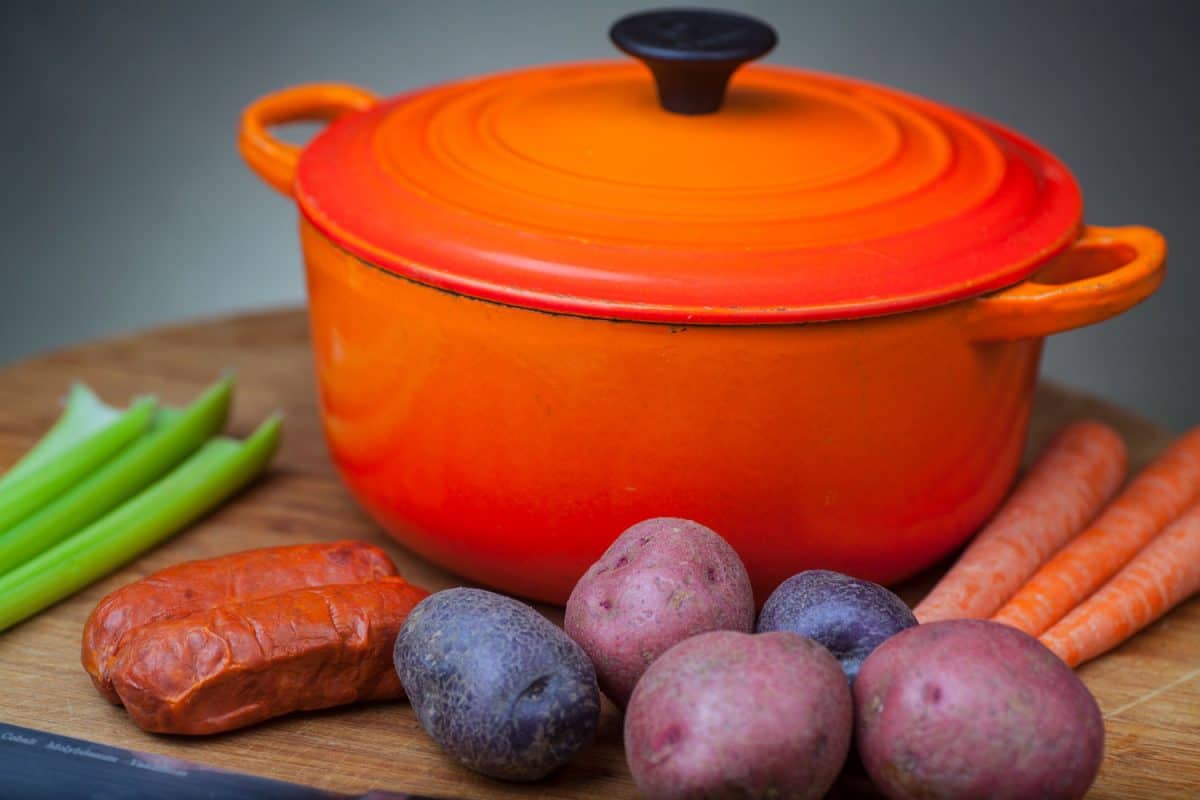
Cast iron is the primary material used by manufacturers and is considered the most durable for the unique design of Dutch ovens. The solid and sturdy enameled cast iron or bare cast iron will evenly heat the foods, allowing them to cook to perfection slowly.
At the same time, the protection of the heavy lid keeps the food's natural moisture locked in for additional flavor.
Whether you choose bare cast iron or an enameled Dutch oven, deciding which material format is the best for you requires experimenting. If easy cleanup is a must for you, then choose an enameled Dutch oven.
Suppose you enjoy camping and prefer the traditional look of bare cast iron. Provided you have time to season the Dutch oven and wash it by hand, this may be the best option for you.
Are you wondering where to purchase a Dutch Oven? Click here to read our articles that detail 30 places to buy a Dutch oven online.
Click here to view the Cuisinel Five-Quart Cast Iron Double Dutch Oven on Amazon.
Can you reheat food in a Dutch oven?
Yes, you can reheat foods in the Dutch oven, with a few important precautions to keep in mind. Please do not take the cold Dutch oven from the refrigerator and immediately place it on the hot stove.
Allow the Dutch oven to warm up at room temperature until it isn't cold to the touch. Then, put it on the burner on low-medium heat. Once the Dutch oven is heated, reduce the heat to low to prevent the foods from drying out.
Suppose you were to place the Dutch oven directly from the refrigerator onto a hot burner. The rapid change in temperatures would cause thermal shock. This is the reaction that occurs when molecules present in the cast iron expand sporadically and cause random breaks in the metal materials that could cause holes or shatterings.
Can I use a Dutch oven on the stovetop?
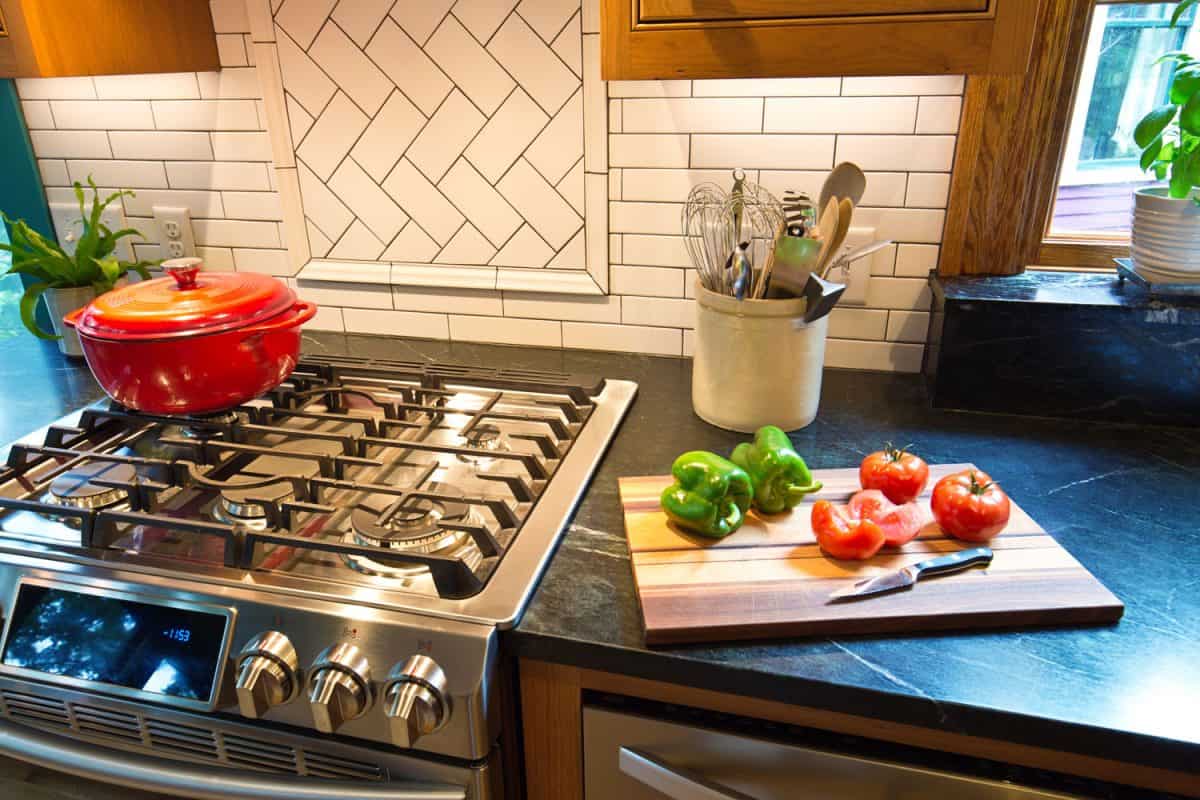
Yes, Dutch ovens are excellent for stovetop cooking, and most brands and models of Dutch ovens are safe for stovetop usage. However, check your owner's manual or manufacturer's website to ensure that yours will work well with your stovetop.
Bare cast iron Dutch ovens should not be used on glass-topped stoves because the bare cast iron will damage and scratch the surface. However, enameled cast-iron Dutch ovens are safe for cooking on a glass top stove.
Word of caution—always gently set the Dutch oven onto the burner and be mindful to avoid dragging it on the stovetop to prevent possible damages.
Would you like to read more about Le Cruset's Dutch ovens and their compatibility with induction stovetops? Click here to read our article that discusses this topic.
Is it safe to heat an empty Dutch oven?
According to Le Cruset, the world's most established Dutch oven manufacturer, it is not advisable to heat an empty Dutch oven because the cast iron interior will heat up quickly and retain its heat longer than most metals. This means the Dutch oven could burn with nothing in it, and the enamel will crack.
If you need to heat your Dutch oven before placing your ingredients inside, heat it on medium or lower heat with a little fat, oil, or water inside.
Pour the liquids out once the Dutch oven is heated to the desired temperature. Never use high heat. The Dutch oven will heat up extremely fast and could cause your food to burn immediately when placed inside.
Additional thoughts
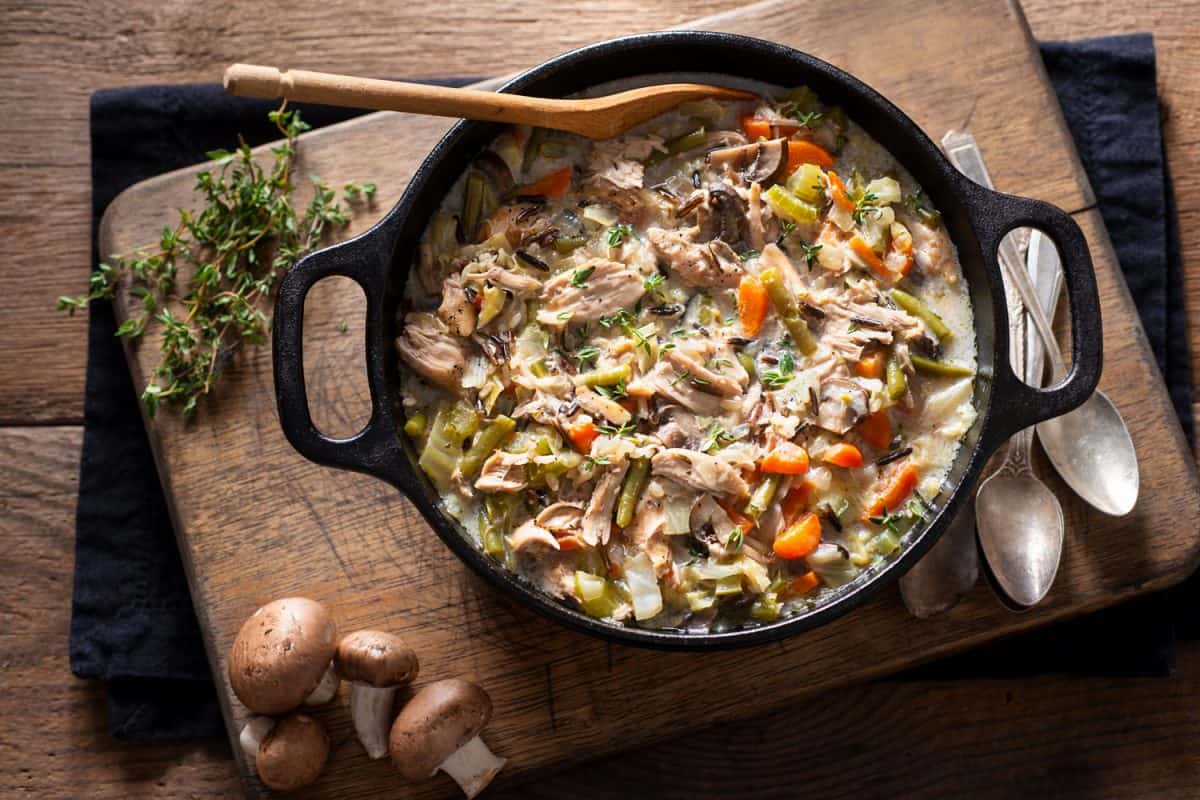
Dutch ovens are multifaceted kitchen wares that can save you time and money when used correctly. To ensure a safe kitchen for you and your loved ones. Please read the following important safety information for using and owning a Dutch oven responsibly.
- Do not cook/heat on high.
- Never use metal utensils. These will scratch the enamel and damage the interior of the Dutch oven. For best results, use plastic or wood utensils.
- Enamel-coated Dutch ovens are prone to staining after a few years of usage. Do not use metal scrubbers or harsh detergents, which will remove the finish. Use baking soda and water, and let it simmer; the stains should remove easily.
- Never heat the Dutch oven dry; doing so will damage the enamel.
- Don't change temperatures on the stovetop rapidly. The temperature fluctuation will cause cracking. Always allow the Dutch oven time to adjust to temperature changes slowly.
- Avoid melting your Dutch oven lid's plastic knob. The Dutch oven itself can tolerate over 400 degrees, but the plastic knob cannot. When baking at 400 or above, be mindful not to place the lid in the oven.
- Most Dutch ovens that are enamel coated are dishwasher safe. However, it is advisable to wash it by hand with gentle dish soap and a soft dish towel to avoid the wearing effects of dishwasher usage.
- Keep children and pets out of the kitchen when you take the Dutch oven out of your oven to avoid accidents or burns.
- Always wear oven mitts when operating your Dutch oven, whether you are baking in the comfort of your home kitchen or you are cooking over an open fire.
Click here to view silicone oven mitts on Amazon.
In closing
Dutch ovens are a long-term investment for your kitchen that will last for several years or decades if cared for properly. Always follow the owner's manual guidelines for care and usage. Never put your beautiful Dutch oven into the microwave!
Please, be sure to check out some of our other posts to help further your culinary knowledge base:
Can I Put A Dutch Oven In The Oven?
What Oil Is Best For Cast Iron Cooking?
Can I Use An Immersion Blender In Le Creuset?





